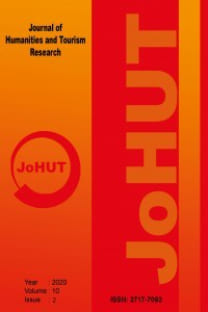Çocuklarda Bilgisayar Oyunları Okur-Yazarlığı Örnek Çalışma: “Ghost In The Shell Stand Alone Complex” Oyunu
Görsel okuryazarlık becerilerini kazanma sürecinde dünyaya ilişkin görsel tasarımlar söz konusu olduğunda bir çocuk için "her şey yenidir", ilk kez görülmektedir. Oyun örgüsü içerisinde eylemde bulunan çocuklar, sürekli bir biçimde gözlem halinde olan varlıklar olarak kendilerine yeni bir şeyler sunan dünyayla görsel bir bütünleşme içindedir. Çocuğun izlenimlerinde anı-imajlar görsel kompozisyonlar olarak süreklilik halindedir ve çocukluğa ait arketipler görsel hafıza bankalarında saklanmaktadır. Fotoğraflar, grafikler, imgeler işlevsel anlamda; teknik ilkeler, kompozisyon, stratejiler, kurgu ve yapım unsurlarıyla etkide bulunurken, sosyal ve kültürel anlamda; anlam yaratma, duygu oluşturma, deneysel ve kavramsal bilginin belirlenmesi, bağlantı oluşturma, izleyicileri anlama, görme ve anlama biçimleri, kendi yaşam deneyimlerini kullanabilme ve dünyayı anlamlandırma boyutlarına denk düşmektedir. Bilgisayar oyunları bu süreçte devreye girerek yaratıcı ve yenilikçi tasarımlarıyla; yeni öğrenilenleri var olan uygulamalara, yeni kombinasyonlara, yeni görme ve eyleme yollarına aktararak yaratıcılık ve yenilik unsurlarına eklemlemektedir. Çocukların sürekli biçimde bütünleşme içinde olduğu görsel bankalardan olan bilgisayar oyunları, görsel okuryazarlık becerisini arttıran ve yönlendiren medya içerikleridir. Günümüzde artık oyun tasarımları sadece görmeye ve duymaya değil, hissedebilmeye de ilişkin teknolojik yenilikleri gereklilik olarak öne sürmekte, her bir yeni oyun versiyonu yeni bir katılımcı hissiyatına da referansta bulunmaktadır. Bu çalışmada ele alınan ve “Ghost in The Shell” adlı animasyonun bir medya uzantısı olarak tasarlanan “Ghost in The Shell Stand Alone” adlı bilgisayar oyunu, görsel ve mekânsal algıyı multiplatform tasarımlar şeklinde ortaya koymakta, mekan-zaman birliğini dağıtarak yapıbozumcu görsel tasarımlarıyla yeni bir tekno-bilinç oluşturmaktadır. Çalışmada, bilgisayar oyunundan seçilen görsellerin analiziyle, fiziksel tasarımın, statik durumdan canlandırma grafiğe uzanan yolda görüntünün algısal karakteristiğini ne şekilde biçimlediği aktarılacaktır.
Anahtar Kelimeler:
Görsel Okuryazarlık, Tasarım, Canlandırma, Teknoloji, Dijital Kültür
Computer Games Literacy of Children Case Study: Ghost in the Shell Stand Alone Complex Game
Everything is new about visual designs of the world and has been seeing for the first time for a child on the process of gaining the visual literacy. Acting children in the game chain are continually in the situation of observation and they have a visual entegration with the world which presents new things. Children’s memory-images are continual in their observations as visual compositions and archetypes of their childhood and they are hidden in the visual memory banks. Photographs, graphics, images are effective as functional, technical principles, composition, strategies are effective as fictional In the mean of socio-cultural, creating the meaning, formulating the emotion, defining the experimental as conceptual knowledge, linking the connection, understanding the audiences, seeing and understanding ways are appropriate to self using of life experiments and giving meaning to the world. On this phase, computer games become operational through creative and innovative designs. They transmit the new learning to exist applications, new combinations, new seeing and acting ways thus they articulate the creativeness and innovative elements. Computer games as visusal banks, in which chidren are in a kind of integration, are media contens which lead and enhance their visual literacy. Nowadays, game designs are not only seeing and hearing but for feeling related to technological innovations. Every single new game version has been referring to a new participator feelings. The title of this study as the game of “Ghost in The Shell Stand Alone Complex” is a media extent of animated film “Ghost in The Shell”. This game reveals the visual and spatial perception as multiplatform designs, diffuses the time-space unity thus, it creates a new techno-consciousness through deconstructive visual designs. In the study, selected scenes of the computer game will be analyzed and how the physical design formulates the perceptional characteristic of the images will be discussed on the way from static position to animated graphics.
Keywords:
Visual Literacy, Design, Animation, Technology, Digital Culture,
___
- Brunnett, Guido Coquillart, Sabine ve Welch, Greg (2011). Virtual Realities: Dagstuhl Seminar 2008. Wien: Springer Verlag
- Burn, Andrew (2009). Making New Media: Creative Production and Digital Literacies. New York: Peter Lang Publishing Inc.
- Dong, Andy Moere, Andrew Vande ve Gero, John S (2007). Computer-Aided Architectural Design Futures 2007, Proceedings of the 12th International CAAD Futures Conference. Netherland: Springer Verlag.
- Jacko, Julia A ve Stephanidis, Constantine (2003). Human-Computer Interaction: Theory and Practice Part I. New Jersey: Lawrence Erlbaum Associates Inc.
- Laramée, Francois Dominic (2002). Game Design Perspectives. Massachusetts: Charles River Media Inc.
- Larson, Joanne ve Marsh, Jackie (2005). Making Literacy Real: Theories and Practices for Learning and Teaching. London: Sage Publications.
- Longhurst, Thomas M (1974). Linguistic Analysis of Children's Speech: Readings, MSS Information Corporation.
- Lowood, Henry E ve Nitsche, Michael (2011). The Machinima Reader. USA:MIT.
- Machado, Jeanne M (2010-2007). Early Childhood Experiences in Language Arts: Early Literacy. USA: Wadsworth Cengage Learning
- Moore, David Mike ve Dwyer, F M (1994). Visual Literacy: A Spectrum of Visual Learning. New Jersey: Educational Technology Publications.
- Qvortrup, Lars (2002). Virtual Space: Spatiality in Virtual Inhabited 3D Worlds, London: Springer Verlag.
- Salvan, George Salinda (2000). Architectural and Construction Data: A Digested Book for Daily Use. Ouezon City: JMC Press Inc.
- Smith, Michael J ve Saivendy, G (2001). Usability Evaluation and Interface Design: Cognitive Engineering, Intelligent Agents, and Virtual Reality, Volume 1. New Jersey: Lawrence Erlbaum Associates Inc.
- Walker, John A ve Chaplin, Sarah (1997). Visual Culture: An Introduction, New York: Manchester University Press.
- Wolf, Mark J P ve Perron, Bernard (2003). Video Game Theory Reader Two, New York: Routledge
- http://paul.luon.net/hypermedia/chapter1/intro/hypertext.html. 11.04.2013.
- http://www.gamestudies.org/0501/lindley. 11.04.2013
- ISSN: 2717-7092
- Başlangıç: 2010
- Yayıncı: Karabük Üniversitesi
Sayıdaki Diğer Makaleler
Örgüt Kültürü ve Halkla İlişkiler
Tedarik Zinciri Yönetiminin Inovasyon Stratejilerine Etkisi Üzerine Bir Araştırma
Hz. Peygamber Döneminde Hukuksal Gelişim ve Yargısal Örgütlenme
Eşinden Ayrılmış Annelerin Görüşü Açısından Çocuklarının Sorunları
